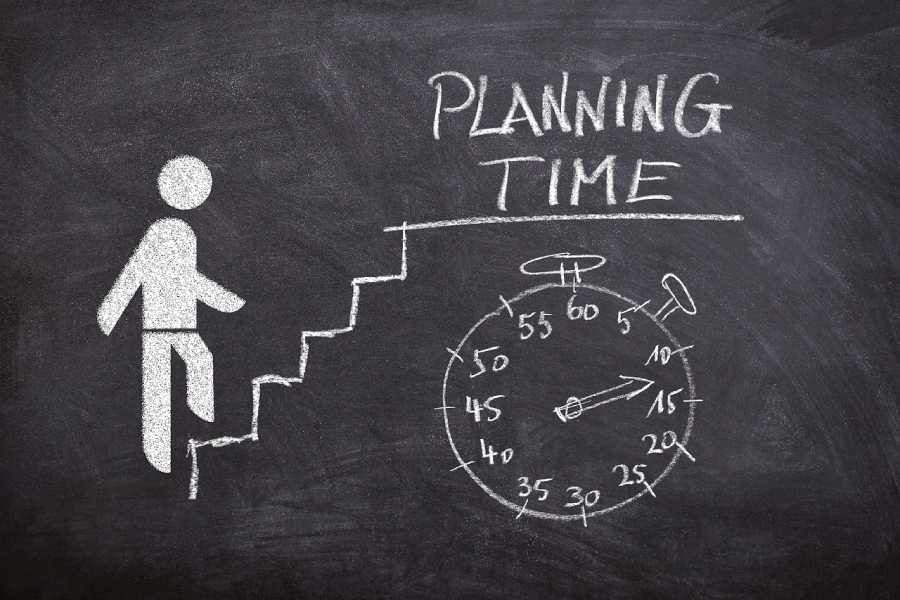After reading a number of studies, it has become increasingly evident that there is a connection between your physical fitness, and your financial fitness.
One study asked participants to rate their ‘financial situation’ as well as other aspects of their lives (including physical health).
The results of the study showed a correlation; those who rated low on physical fitness, lack of sleep and relationship problems were also rating themselves low in their financial situation.
Those who rated themselves having a “Below Average” financial situation:
- 34% admitted poor physical fitness,
- 32% admitted their relationships were affected by money worries,
- 38% admitted that they were unable to sleep because of financial troubles
While those who rated themselves having an “Under control” financial situation:
- 9% admitted poor physical fitness
- 14% admitted relationships affected by money worries,
- 11% admitted unable to sleep because of financial troubles
That’s almost DOUBLE the difference for these three categories.
…. But what does this mean?

Going for a run isn’t going put coin in your bank account – however there are definitely some similarities between managing your wealth and managing your health.
NOTE – YOU DON’T NEED TO BE AN OLYMPIAN TO FEEL GOOD ABOUT YOUR PHYSICAL FITNESS, MUCH LIKE YOU DON’T NEED TO BE A MILLIONAIRE TO BE HAPPY WITH YOUR FINANCIAL FITNESS.
Get Wealthy, the same way you Get Healthy!
Goal Setting.
The first thing we all do when we contemplate getting fit (or fitter) – we set goals!
- Lose weight / hit a weight target “Get down to 85kg”
- Increase Muscle “add 5kg of lean muscle”
- Run further than you have before “Run 10km in under an hour”
- Or simply “Attend the Gym 3 times a week”
We need to do the same thing for our finances:
- Save a home deposit – “Save $150 per week for 3 years”
- Set up my financial future “Understand where I am, and how I’m going to get there”
- Pay down debt “Have my credit cards paid off in 1 year”
Step 1 – Set yourself some goals!

Base Line vs Goal
The next step is, we need to understand where we are, in relation to where we want to get to.
“Get down to 85kg” – is a very different goal for someone who is 90kg, or 150kg.
Much like “Saving $150pw” – is a very different goal for someone who is currently saving $100pw, than someone who is negative $200pw week, with debt increasing.
With physical fitness, its easy to know where we are starting – you can weight, or time, or measure your current fitness easily enough.
Financially however, this can be more difficult. How much are you currently saving? What is your actual cash flow? What are your fixed costs, what can you change? What are you net assets and liabilities?
Step 2 – Find your baseline (Your Assets, Liabilities, Income and Expenses) – and then what they need to be to reach your goal.

Training Schedule
Great – we know where we are, and we know where we want to be. What actions do we need to do to get there?
You want to “add 5kg of muscle” – your training schedule might be, work out 3 times a week, change muscle group each day, consume 100,000 grams of protein per day.
What is your financial training schedule?
Need to reduce your expenses to increase your savings, maybe you need to, ‘review your insurances, spend no more than $500 per week on food, cancel subscriptions to services you don’t use’, then transfer savings into a high interest saving account.
Step 3 – What are your actions, daily, weekly, monthly. Don’t skip leg day!

Time to Exercise
Planning is great. Doing is better.
You have a goal, you’ve set your training schedule – now you need to actually get out there.
You need to attend the gym, not just pay for the membership. You need to go for that run, or lift those weights.
Finances are the same – so often to great financial plans falter at ‘the budget’ – however when it comes time to make the changes, the gym bag doesn’t get looked at.
Step 4 – Go for a financial run, you’ll feel great.

Measure your performance and progress
Are you on track? Do you need to make any adjustments?
One of the best ways to ruin your motivation, is failing to measure how you’re going.
Can’t see any weight loss in the mirror or scales – time to give up!
However if you accurately measured yourself, recorded your fat loss and muscle gain, monitored your heart rate – you may have been making gains all along; this will only motivate you further.
The other issue is – maybe your plan/schedule isn’t working – measuring allows you to make adjustments.
If your financial goal is to purchase a house – the lack of house can be very demotivating. However if you track your progress, accurately and progressively, you’ll probably surprise yourself.
Step 5 – Where are you, where are you going, are you heading in the right direction?

Next Goal!
There is nothing quiet as rewarding like reaching your goal – so what’s next?
Time to set another goal!
We often see people lose a lot of weight, then put it all back on. This is because their plan wasn’t sustainable, or they failed to set that next goal.
New Goal, new motivation.
The nothing kills financial discipline like that first home or investment property. It adds a new level of complexity with a mortgage, money going in and out of a much larger bucket, measuring gets harder, exercising gets harder, then the whole schedule gets thrown out the window!
Millennials trying to get into their first home are often branded incompetent with money, spending all their cash on smashed avocados – however from my experience, it’s the family with 4 investment properties who have absolutely no idea what money comes in and goes out.
Step 6 – It isn’t about getting from A to B. Its about A, B, C….F…J…K It’s about the current goal, and the next goal.

Motivation – Get a Personal Trainer
Can’t find the motivation, get a professional to help you.
Some people need a personal trainer to keep them honest. Inspiration to first attend the gym, and a person standing in front of them really helps push that little bit harder – do that extra set.
Can’t find the financial motivation? – get a financial adviser to help you.
All the things that a PT does for your health a (good) financial adviser will do for your wealth. (And in most cases, a financial adviser is cheaper per hour than a PT!)
Step 7 – If you can’t find your own motivation, pay for some.

After reading a number of studies, it has become increasingly evident that there is a connection between your physical fitness, and your financial fitness.
One study asked participants to rate their ‘financial situation’ as well as other aspects of their lives (including physical health).
The results of the study showed a correlation; those who rated low on physical fitness, lack of sleep and relationship problems were also rating themselves low in their financial situation.
Those who rated themselves having a “Below Average” financial situation:
- 34% admitted poor physical fitness,
- 32% admitted their relationships were affected by money worries,
- 38% admitted that they were unable to sleep because of financial troubles
While those who rated themselves having an “Under control” financial situation:
- 9% admitted poor physical fitness
- 14% admitted relationships affected by money worries,
- 11% admitted unable to sleep because of financial troubles
That’s almost DOUBLE the difference for these three categories.
…. But what does this mean?

Going for a run isn’t going put coin in your bank account – however there are definitely some similarities between managing your wealth and managing your health.
NOTE – YOU DON’T NEED TO BE AN OLYMPIAN TO FEEL GOOD ABOUT YOUR PHYSICAL FITNESS, MUCH LIKE YOU DON’T NEED TO BE A MILLIONAIRE TO BE HAPPY WITH YOUR FINANCIAL FITNESS.
Get Wealthy, the same way you Get Healthy!
Goal Setting.
The first thing we all do when we contemplate getting fit (or fitter) – we set goals!
- Lose weight / hit a weight target “Get down to 85kg”
- Increase Muscle “add 5kg of lean muscle”
- Run further than you have before “Run 10km in under an hour”
- Or simply “Attend the Gym 3 times a week”
We need to do the same thing for our finances:
- Save a home deposit – “Save $150 per week for 3 years”
- Set up my financial future “Understand where I am, and how I’m going to get there”
- Pay down debt “Have my credit cards paid off in 1 year”
Step 1 – Set yourself some goals!

Base Line vs Goal
The next step is, we need to understand where we are, in relation to where we want to get to.
“Get down to 85kg” – is a very different goal for someone who is 90kg, or 150kg.
Much like “Saving $150pw” – is a very different goal for someone who is currently saving $100pw, than someone who is negative $200pw week, with debt increasing.
With physical fitness, its easy to know where we are starting – you can weight, or time, or measure your current fitness easily enough.
Financially however, this can be more difficult. How much are you currently saving? What is your actual cash flow? What are your fixed costs, what can you change? What are you net assets and liabilities?
Step 2 – Find your baseline (Your Assets, Liabilities, Income and Expenses) – and then what they need to be to reach your goal.
Training Schedule
Great – we know where we are, and we know where we want to be. What actions do we need to do to get there?
You want to “add 5kg of muscle” – your training schedule might be, work out 3 times a week, change muscle group each day, consume 100,000 grams of protein per day.
What is your financial training schedule?
Need to reduce your expenses to increase your savings, maybe you need to, ‘review your insurances, spend no more than $500 per week on food, cancel subscriptions to services you don’t use’, then transfer savings into a high interest saving account.
Step 3 – What are your actions, daily, weekly, monthly. Don’t skip leg day!

Time to Exercise
Planning is great. Doing is better.
You have a goal, you’ve set your training schedule – now you need to actually get out there.
You need to attend the gym, not just pay for the membership. You need to go for that run, or lift those weights.
Finances are the same – so often to great financial plans falter at ‘the budget’ – however when it comes time to make the changes, the gym bag doesn’t get looked at.
Step 4 – Go for a financial run, you’ll feel great.

Measure your performance and progress
Are you on track? Do you need to make any adjustments?
One of the best ways to ruin your motivation, is failing to measure how you’re going.
Can’t see any weight loss in the mirror or scales – time to give up!
However if you accurately measured yourself, recorded your fat loss and muscle gain, monitored your heart rate – you may have been making gains all along; this will only motivate you further.
The other issue is – maybe your plan/schedule isn’t working – measuring allows you to make adjustments.
If your financial goal is to purchase a house – the lack of house can be very demotivating. However if you track your progress, accurately and progressively, you’ll probably surprise yourself.
Step 5 – Where are you, where are you going, are you heading in the right direction?

Next Goal!
There is nothing quiet as rewarding like reaching your goal – so what’s next?
Time to set another goal!
We often see people lose a lot of weight, then put it all back on. This is because their plan wasn’t sustainable, or they failed to set that next goal.
New Goal, new motivation.
The nothing kills financial discipline like that first home or investment property. It adds a new level of complexity with a mortgage, money going in and out of a much larger bucket, measuring gets harder, exercising gets harder, then the whole schedule gets thrown out the window!
Millennials trying to get into their first home are often branded incompetent with money, spending all their cash on smashed avocados – however from my experience, it’s the family with 4 investment properties who have absolutely no idea what money comes in and goes out.
Step 6 – It isn’t about getting from A to B. Its about A, B, C….F…J…K It’s about the current goal, and the next goal.

Motivation – Get a Personal Trainer
Can’t find the motivation, get a professional to help you.
Some people need a personal trainer to keep them honest. Inspiration to first attend the gym, and a person standing in front of them really helps push that little bit harder – do that extra set.
Can’t find the financial motivation? – get a financial adviser to help you.
All the things that a PT does for your health a (good) financial adviser will do for your wealth. (And in most cases, a financial adviser is cheaper per hour than a PT!)
Step 7 – If you can’t find your own motivation, pay for some.






